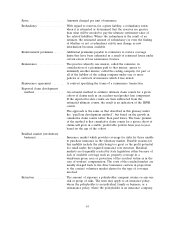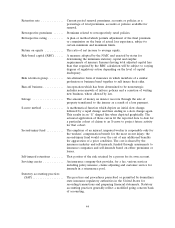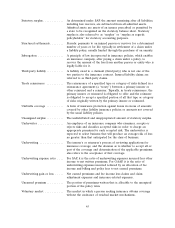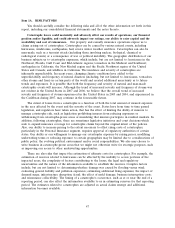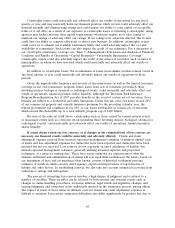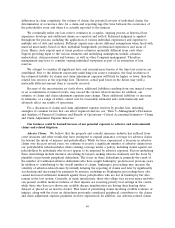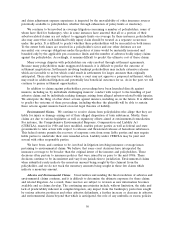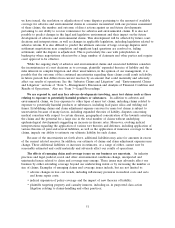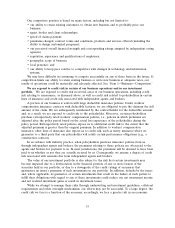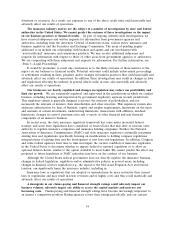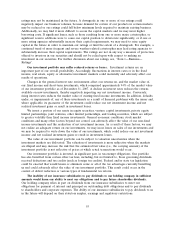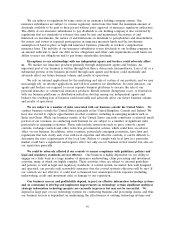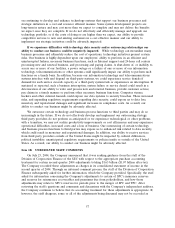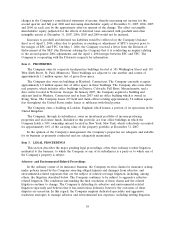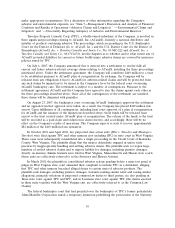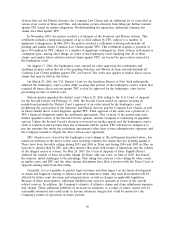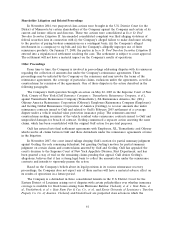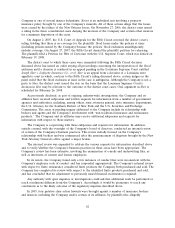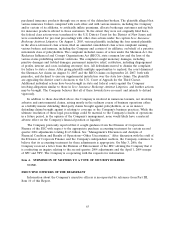Travelers 2007 Annual Report Download - page 65
Download and view the complete annual report
Please find page 65 of the 2007 Travelers annual report below. You can navigate through the pages in the report by either clicking on the pages listed below, or by using the keyword search tool below to find specific information within the annual report.Our competitive position is based on many factors, including but not limited to:
• our ability to retain existing customers, to obtain new business and to profitably price our
business;
• agent, broker and client relationships;
• speed of claims payment;
• premiums charged, contract terms and conditions, products and services offered (including the
ability to design customized programs);
• our perceived overall financial strength and corresponding ratings assigned by independent rating
agencies;
• reputation, experience and qualifications of employees;
• geographic scope of business;
• local presence; and
• our ability to keep pace relative to competitors with changes in technology and information
systems.
We may have difficulty in continuing to compete successfully on any of these bases in the future. If
competition limits our ability to retain existing business or write new business at adequate rates, our
results of operations could be materially and adversely affected. See ‘‘Item 1—Business—Competition.’’
We are exposed to credit risk in certain of our business operations and in our investment
portfolio. We are exposed to credit risk in several areas of our business operations, including credit
risk relating to reinsurance, as discussed above, as well as credit risk related to policyholders in certain
lines of insurance and credit risk associated with independent agents and brokers.
A portion of our business is written with large deductible insurance policies. Under workers’
compensation insurance contracts with deductible features, we are obligated to pay the claimant the full
amount of the claim. We are subsequently reimbursed by the contractholder for the deductible amount
and, as a result, we are exposed to credit risk to the policyholder. Moreover, certain policyholders
purchase retrospectively rated workers’ compensation policies, i.e., policies in which premiums are
adjusted after the policy period based on the actual loss experience of the policyholder during the
policy period. Retrospectively rated policies expose us to additional credit risk to the extent that the
adjusted premium is greater than the original premium. In addition to workers’ compensation
insurance, other lines of insurance also expose us to credit risk, such as surety insurance where we
guarantee to a third party that our policyholder will satisfy certain performance obligations (e.g., a
construction contract).
In accordance with industry practice, when policyholders purchase insurance policies from us
through independent agents and brokers, the premiums relating to those policies are often paid to the
agents and brokers for payment to us. In most jurisdictions, the premiums will be deemed to have been
paid to us whether or not they are actually received by us. Consequently, we assume a degree of credit
risk associated with amounts due from independent agents and brokers.
The value of our investment portfolio is also subject to the risk that certain investments may
become impaired due to a deterioration in the financial position of one or more issuers of the
securities held in our portfolio, or due to a downgrade of the credit ratings of an insurer that
guarantees an issuer’s payments of such investments in our portfolio. In addition, defaults by the issuer
and, where applicable, its guarantor, of certain investments that result in the failure of such parties to
fulfill their obligations with regard to any of these investments could reduce our net investment income
and net realized investment gains or result in investment losses.
While we attempt to manage these risks through underwriting and investment guidelines, collateral
requirements and other oversight mechanisms, our efforts may not be successful. To a large degree, the
credit risk we face is a function of the economy; accordingly, we face a greater risk in an economic
53


